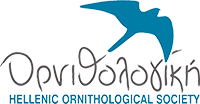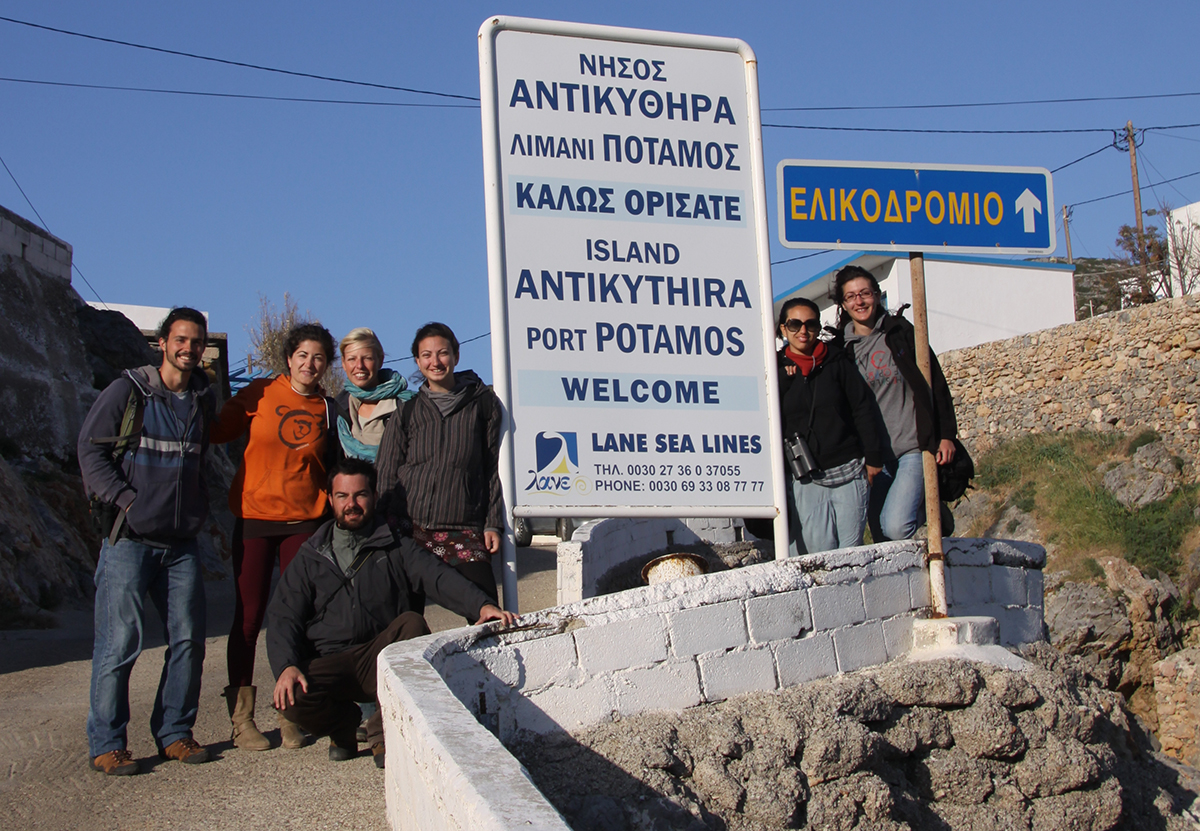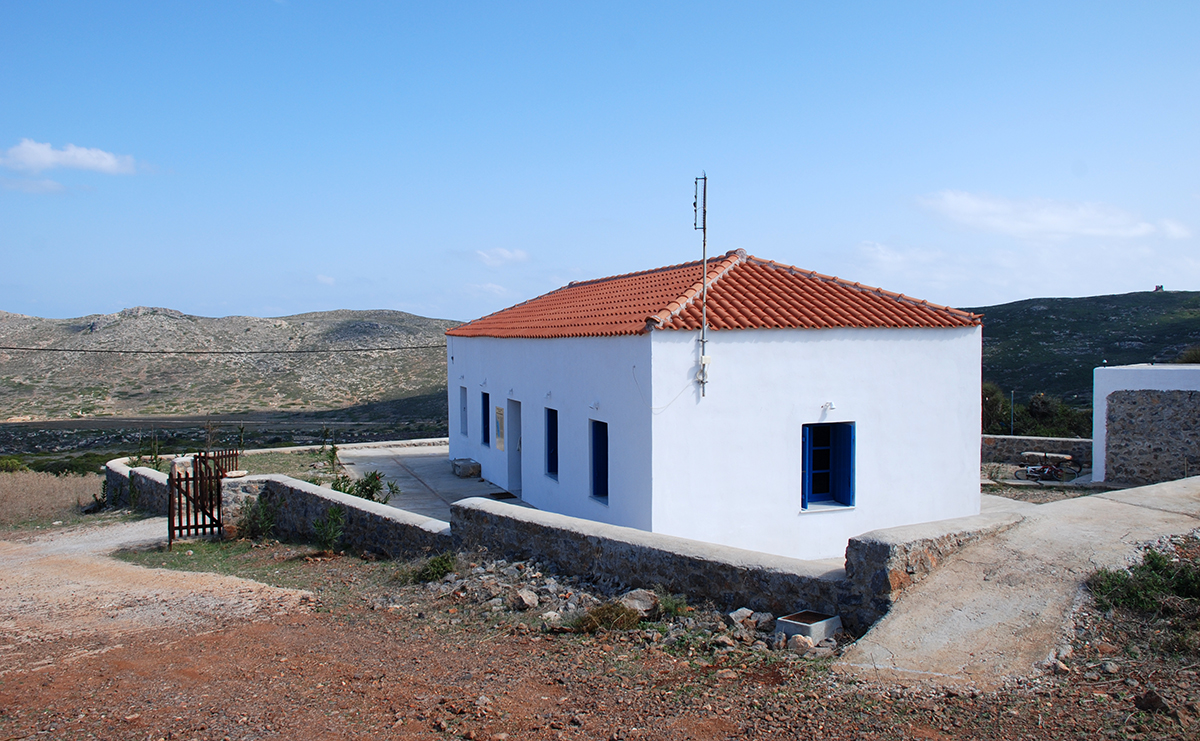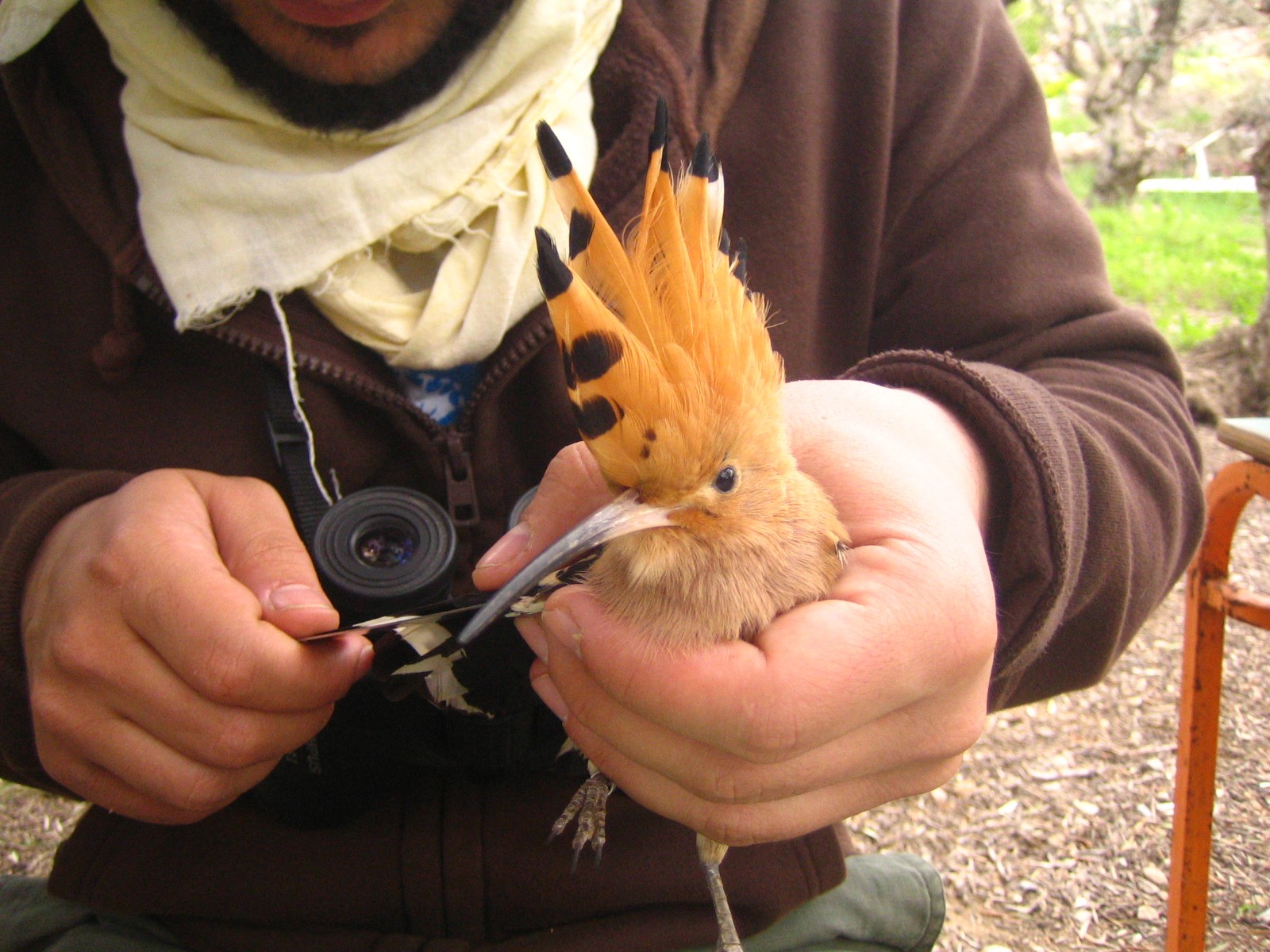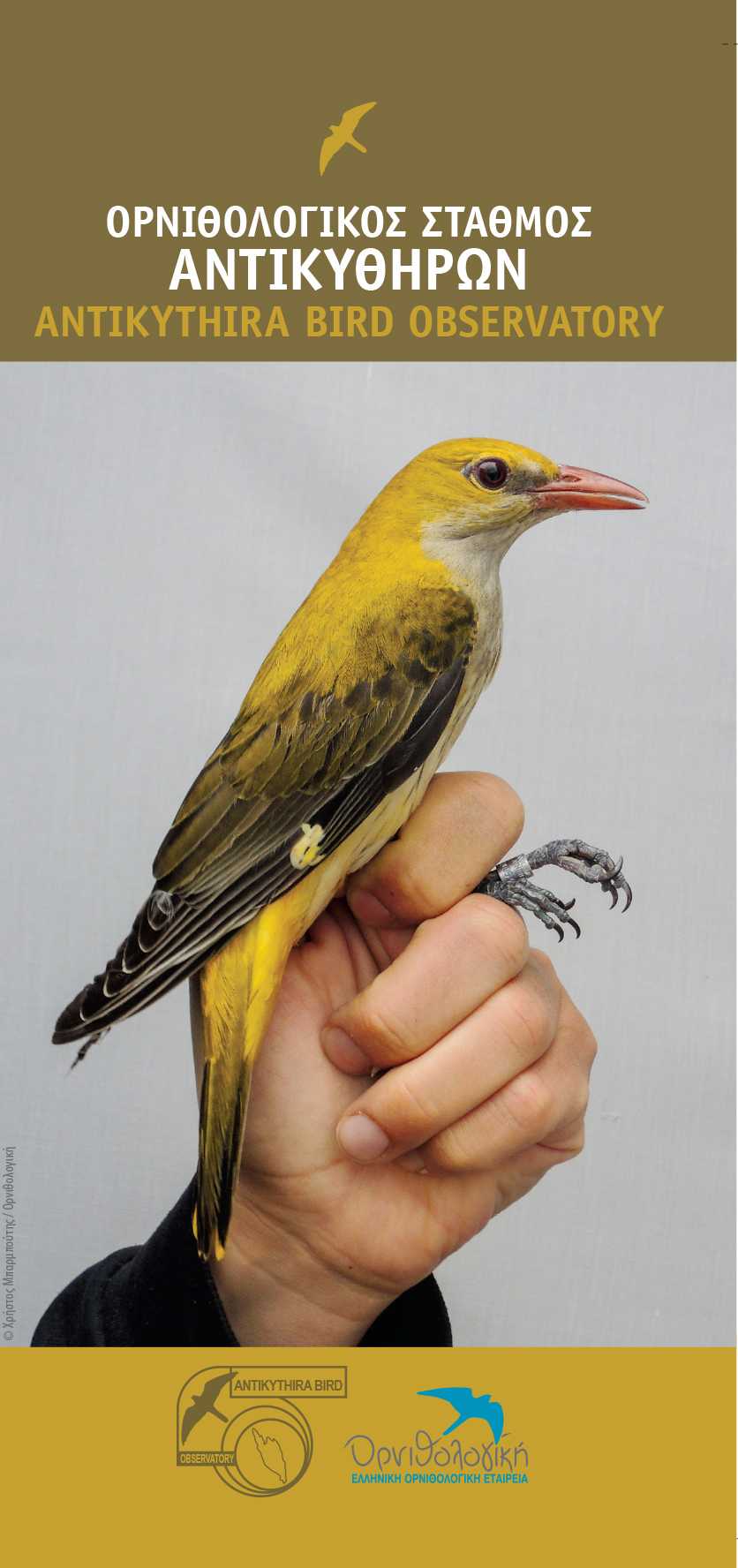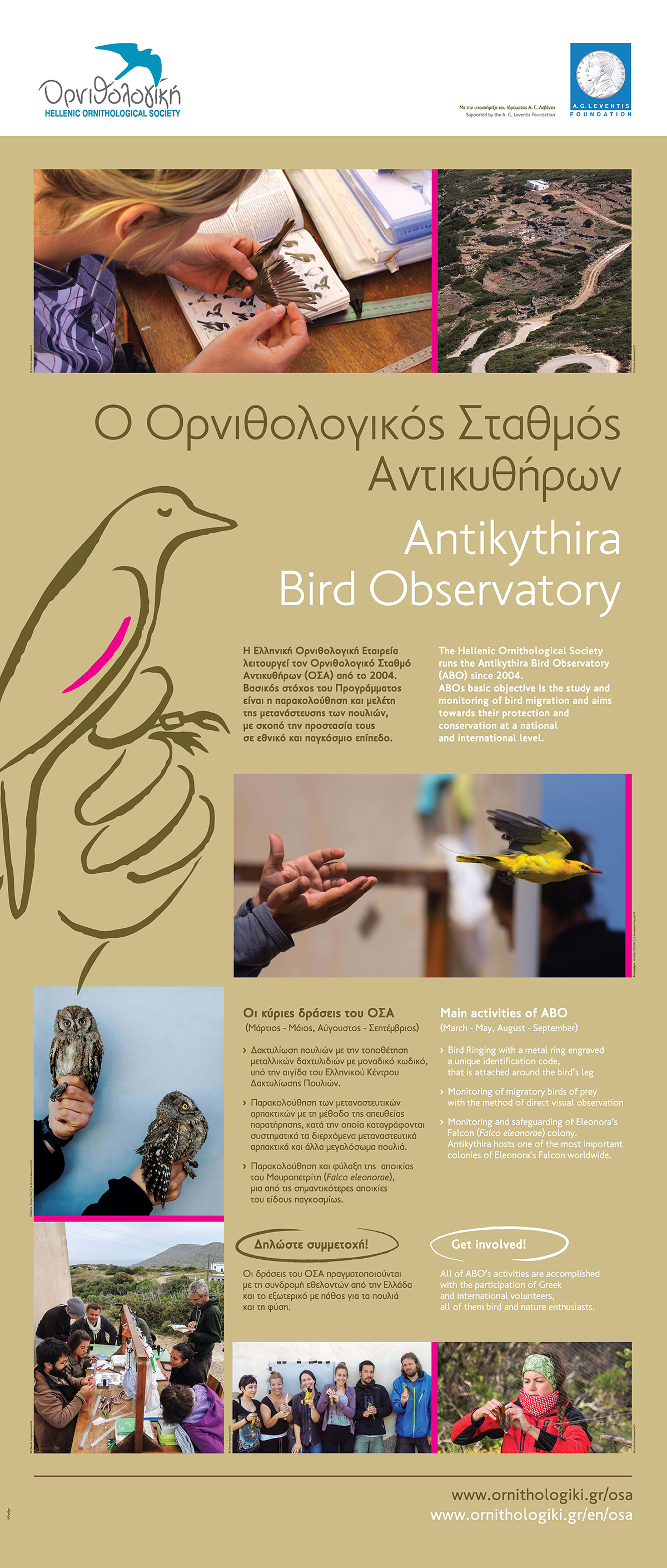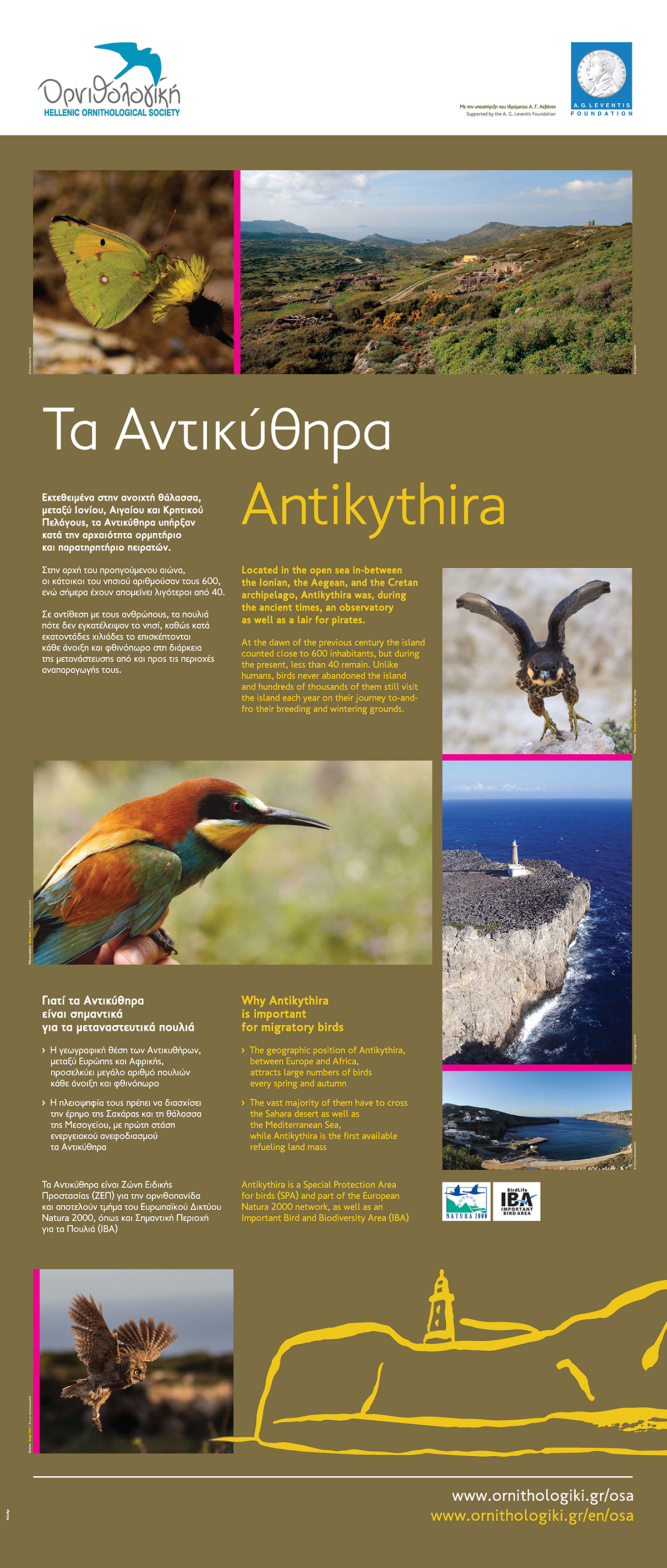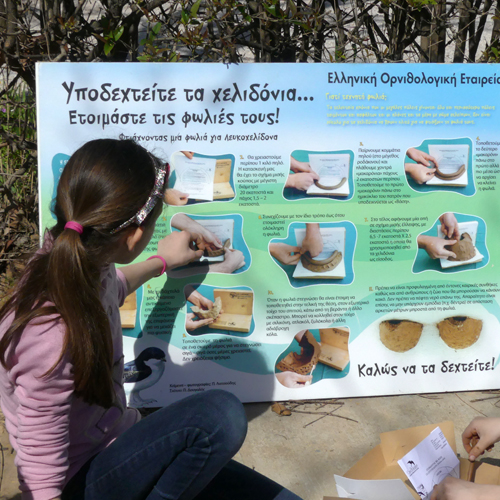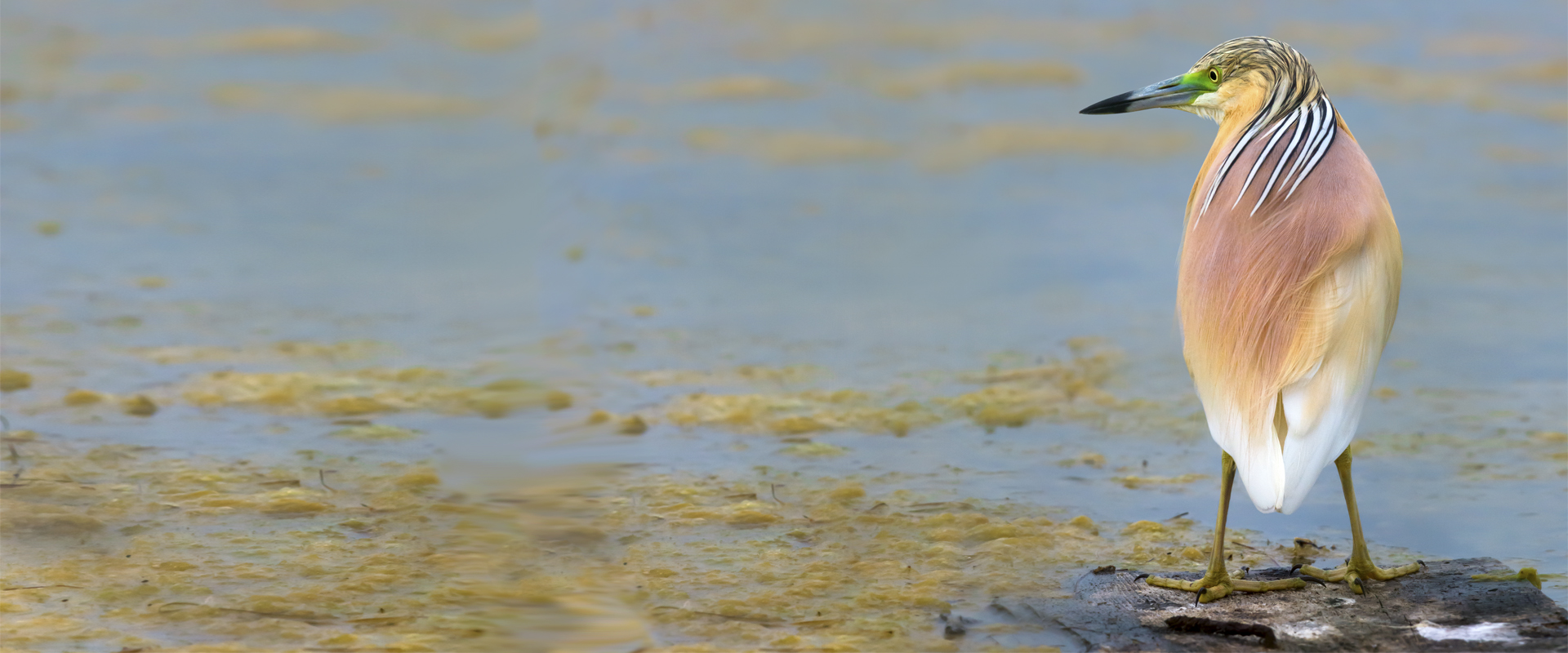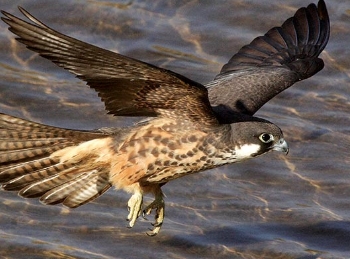- Description
- Historical background
- The importance of Antikythira
- ABO actions
- Volunteer work
- Scientific Publications
- Special publications
The Antikythira Bird Observatory (ABO) is, up to date, the only bird observatory in Greece. It is run by the Hellenic Ornithological Society / BirdLife Greece and operates on the island of Antikythira, the wider marine area surrounding the island, as well as on the two adjacent islets of Prasonisi and Lagouvardos.
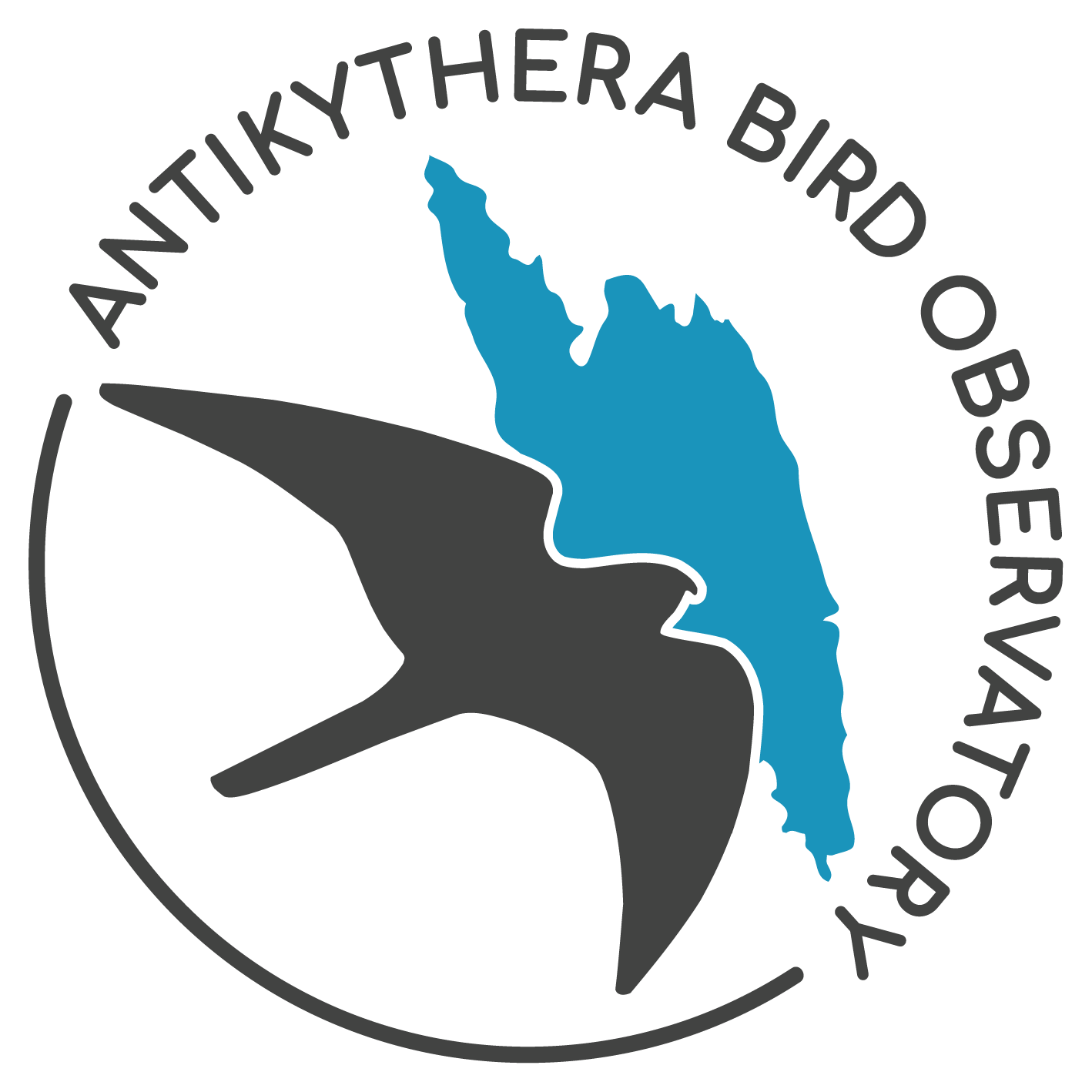
Ornithological research activity on Antikythira has been carried out by HOS since 1997, while the Antikythira Bird Observatory was established three years later, in 2000, with the support of the A. G. Levendis Foundation. Since then, researchers and volunteers have been working on the island during spring (end of March to end of May) and autumn (end of August to the end of September) migration seasons.
They key objectives of the observatory are:
- The monitoring and study of bird migration with a focus on the protection and conservation of migratory birds at a national and international level
- The support of research in Life Sciences studies, conducted by third parties within its operating area
- Promotion of Antikythira as a “birding” and alternative tourism destination
- Environmental awareness of the local community, the tourists and the Antikythirians living abroad
- Supply affordable and accessible capacity-building experiences for national researchers, students, and bird enthusiasts
- Provide banding, research, and learning opportunities for international biologists and students
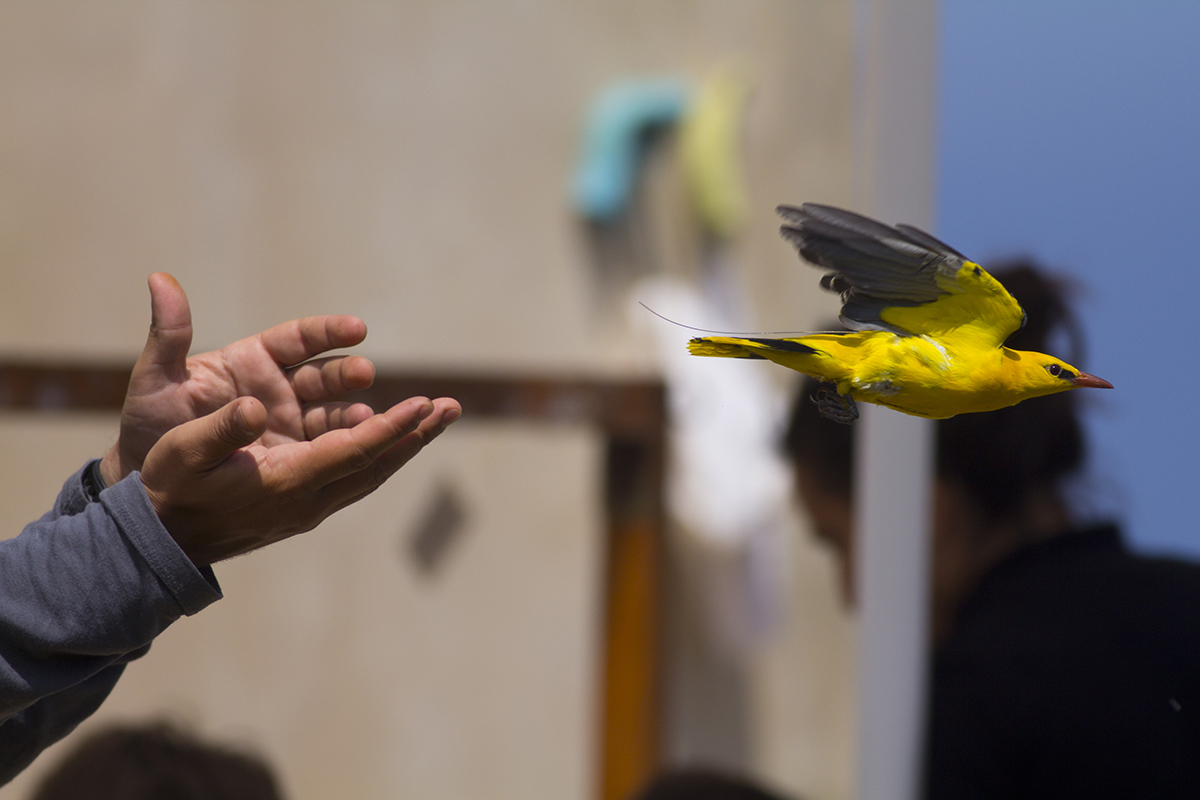
Although bird migration is a feature found in almost every island of the Mediterranean, few areas actually fulfill all the requirements for the creation of a Bird Observatory, The island of Antikythira is among the top 10-15 sites for this purpose.
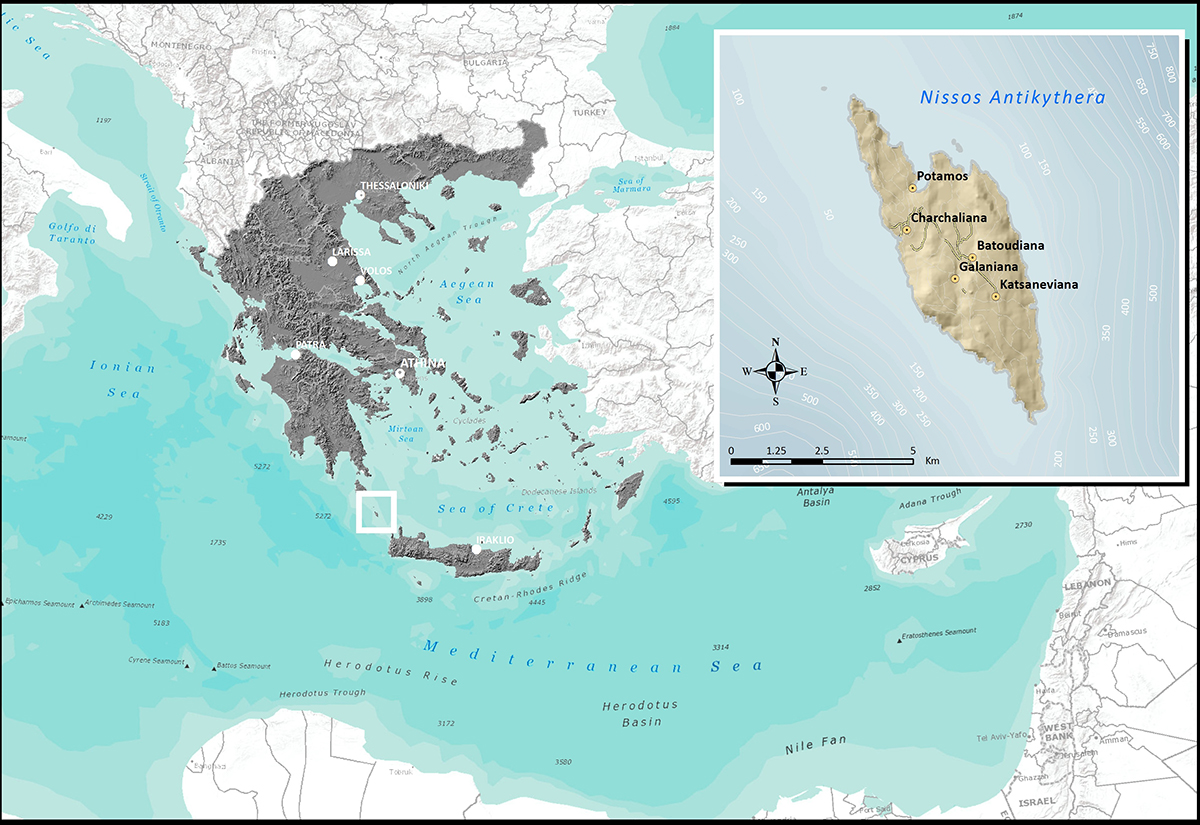
Due to its geographical position and certain features - a longitudinal island, with a north to south direction and very few human activities - Antikythira qualify as an ideal site for population monitoring of large birds of prey (buzzards, harriers, eagles etc) that pass over the Peloponnese and Crete, but also for the study of small birds' migration by direct observation or ringing.
Therefore, unlike any other site in the Mediterannean, a Bird Observatory in Antikythira can offer opportunities for both raptor and small-birds monitoring. Moreover, Antikythira hosts one of the largest populations of Eleonora's Falcons (Falco eleonorae) in the world, adding more to the scientific research. The concentration of so many small bird-feeding falcons is, of course, not a coincidence.
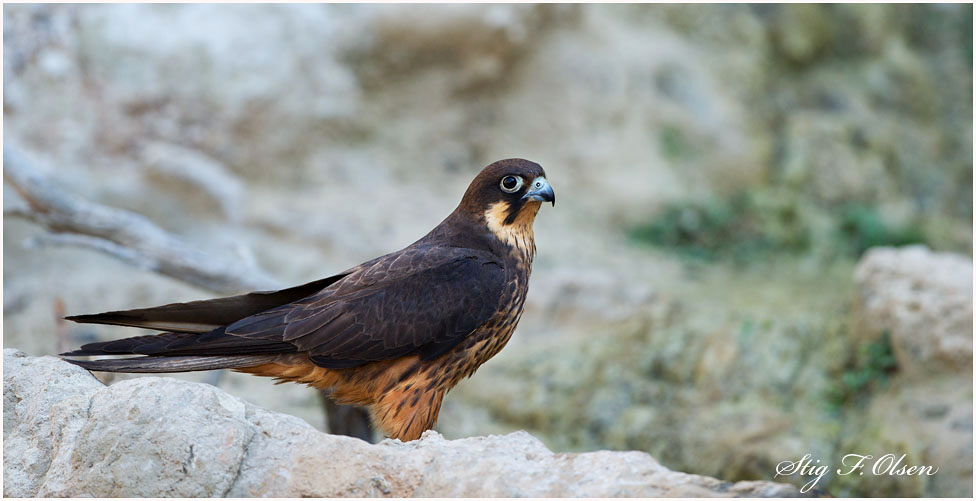
The idea for the creation of an Observatory in Antikythera was conceived in the mid-90s when the "migrational" importance of the island became known. In 1997, the community of Antikythira vested the old school building to the Hellenic Ornithological Society (HOS), an action that led to more efforts to raise funds; however, the task soon proved to be quite challenging. At the same time, more and more data were collected from and about the island. The assistance of top expert ringers from all over the world was requested, and the first organized ringing expedition took place in the spring of 1998. The enthousiastic first group of Italian ringers was followed by another three ringing expeditions and several visits for raptor monitoring.

From very early on, the scientific, ecological and social parameters that needed to be taken into account for the creation of a Bird Observatory in Antikythera, meant the raising of funds for the completion of the project would not be an easy task. Initial financial obstacles were overcome, however, in 2000 when A.G.Leventis Foundation and Anastasios Levendis himself funded the school building's renovation, allowing our team to take the first step towards the realization of this important project. The Bird Observatory opened in 2004 and, through its continuous operation, we have so far managed to gather an impressive bulk of data concerning bird migration, while research work is being adapted year after year to the island's unique nature and the always arising scientific questions.
It is essential to note that without the wormth of the local people who embraced the effort, the financial support of A.G.Levendis Foundation and Anastasios Levendis as well as the personal work of several members and contributors of HOS, the dream of the Antikythira Bird Observatory would have never been made a reality
Areas such as the islands of Antikythira and Kythira as well as the Mani peninsula and Crete play a very important role for thousands of long-distance migrants. Due to the immense distances they have to cover in a short period of time, these areas offer migrating birds opportunities for food and rest, allowing them to replenish all the consumed energy and keep on their migration unhindered.
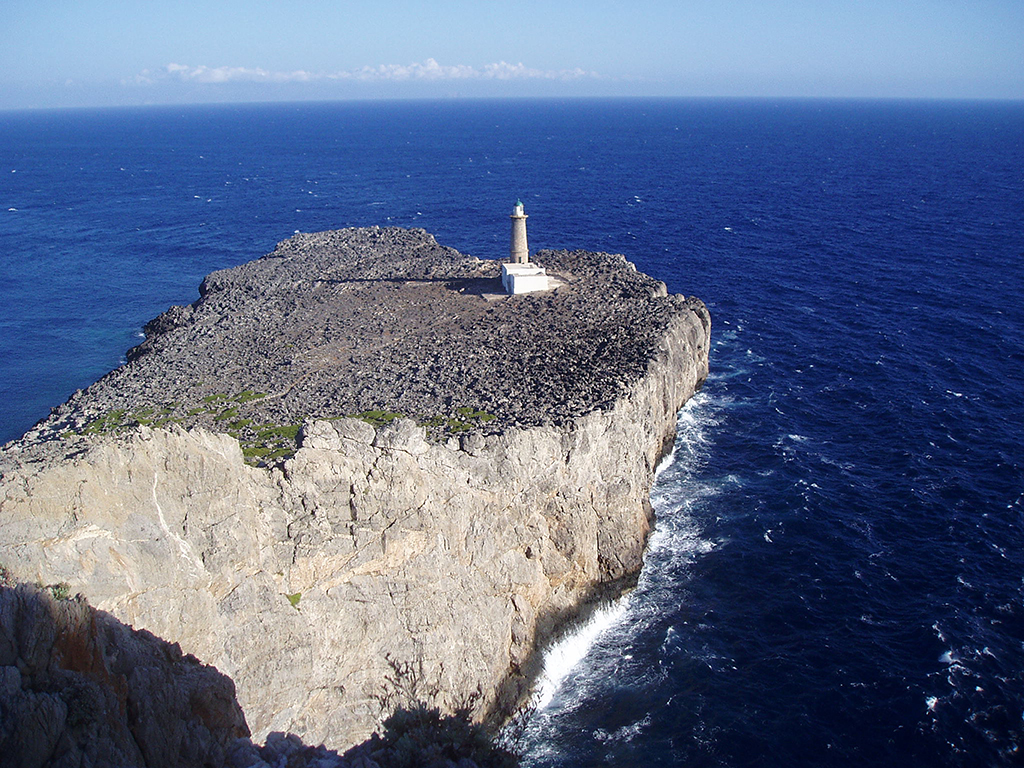
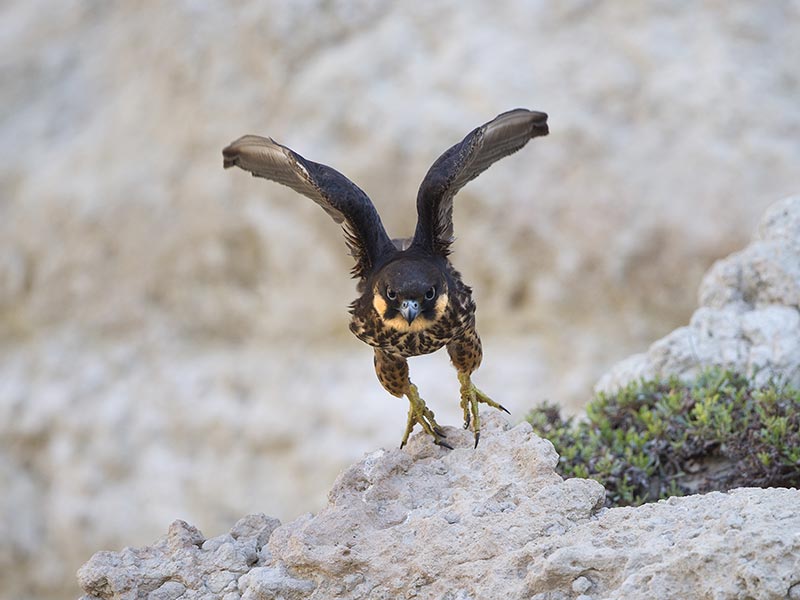
Every year, during both spring and fall migration periods, a huge number of birds pass through the island of Antikythira on their way to and from their breeding grounds. Some of them just pass over without stopping while others spend here a few hours to feed and rest, after a long journey.
In spring, birds are coming from Western Crete or directly from the coasts of North Africa. From early March to mid June millions of small birds pass over the island. Along with them, many waders and waterfowls are using the coasts or the seasonally flooded fields of the inland to rest, while birds of prey pass in fluctuating numbers throughout the whole season. During the fall migration, things are quite different as birds are coming from Europe (mainly the central and eastern parts of the continent). This time of year, however, the adults that passed in spring are accompanied by their offsprings.
From the above data we can point out two features of Antikythira: the island is a very important migration site (more than 200 migrant species) especially for passerines while 5 breeding species are birds of prey, found in good numbers. All of these raptors have been observed feeding on birds, even the Kestrels.
To sum up the main reasons why Antikythira is such an important site for birds:
- It is the only inhabited island with the largest colony of Eleonora’s Falcon (Falco eleonorae), globally
- It is also one of very few cases, if not the only, where so many pairs of birds of prey from 5 different species nest in such a small area.
- It is one of the very few Greek sites where one can observe 28 different species of birds of prey, plus 4-5 subspecies, during both migration periods. Some of them, like the Marsh Harrier (Circus aeruginosus) and the Honey Buzzard (Pernis apivorus) are seen in concentrations even of thousands of birds. Furthermore, some species occur in numbers much higher than in any other migration corridor in the central Mediterranean (south Italy, Sicily, Malta, etc).
- It’s the westernmost site in the world where the Isabelline Wheatear (Oenanthe isabellina) breeds; the closest areas with sparse populations are the eastern Aegean and Thrace.
- Species which, according to their wintering grounds, should not be so regularly passing migrants, have been recorded in large numbers. For example, the Red-breasted Flycatcher (Ficedula parva), wintering in India, is being recorded on the island every fall and in large numbers.
- Finally, it is one of the very few sites in Greece where one can see huge numbers (several thousands) of passerine and other species on a daily basis.

Antikythira is one of the most important sites for the study of bird (raptors and passerines) migration in Greece and the world. At the same time, it’s one of the few areas in the globe where one can so easily learn to identify a great number of bird species.
- It is the only inhabited island with the largest colony of Eleonora’s Falcon (Falco eleonorae), globally
The observatory is engaged in a number of short and long-term research, monitoring, and conservation programs including (but not limited to):
- Monitoring the spring and autumn migration through bird ringing using standardized mist netting
Bird ringing data are available since 2000. The standardized mist netting started on 2007 and thus the observatory holds the longest time series of bird migration data available for Greece. Close to 60 000 birds of 120 species have been ringed up to present.
- Monitoring the spring and autumn raptor migration over Antikythira through direct observations
Currently only autumn migration season is covered. Data for 9 seasons are available up to now compiled of approximately 20,000 observations of close to 40 species. It is by far the most studied raptor migration bottleneck in Greece.
- Monitoring Lepidoptera (butterflies & moths) spring and autumn migration (Pilot activity)
A pilot study was carried out in 2015 and 2016 to set up methodology and target species on which the monitoring will focus on. A preliminary species list has been compiled and the first large scale monitoring scheme is ready to be applied during the coming filed seasons.
- Monitoring and conservation of the Eleonora's Falcon colony
Monitoring of the breeding success takes place on annual bases. The population size of the colony is monitoring regularly every two to three years with a whole island count. Additionally the foraging ecology off the species at the island and the importance of fresh water for the species are studied.
- Training of Greek and foreign bird ringers
In collaboration with the Hellenic Bird Ringing Center Greek and foreign youth are trained in the scientific techniques of bird ringing.
- Monitoring and study of the breeding seabird colonies of the area

Bird Ringing
Short Description
Bird ringing is a scientific research method based on the individual marking of birds. All records of ringed birds, including that of the first capture, the recapture at the same or another place, even that of the final recovery as a dead bird will give us plenty of information about its life. Bird ringing is one of the most effective and old method to study the biology, ecology, behaviour, movement, breeding and productivity and population demography of birds. The main am of bird ringing on Antikythira Bird Observatory is the monitoring of bird migration, the breeding and wintering bird population using constant effort. The unique combination of each ring allows the researchers to draw migration routes and the life span of the birds, as long as some birds are recaptured or found in another area.
Furthermore, during the ringing process several more biometric data can be retrieved that, compared to data of previous years can help drawing conclusions for the migration in general and for the status of the wintering and breeding habitats.
Methodology
Standardised bird ringing takes place every day from dawn and up to eight hours, except for days with adverse weather conditions. Species determination, as well as aging and sexing of birds are carried out according to Svensson (1992) and Jenni & Winkler (1994). The basic measurements taken are maximum wing length, the length of the 8th primary, tarsus length, fat and muscle scores according to Bairlein (1995) and body mass. Positions and total length of nets. Birds are caught with special nets (mist-nets). The position and size of the nets are constant during sampling and between sampling seasons.
Ringings are performed according to international standards under the supervision of the Hellenic Bird Ringing Center. Ringing takes place without the use of luring.
Extra mist nests and the use of luring takes place only during special projects held on ABO.
This action takes for about 5 months a year, from the 15th March to the 31st May and from the 25th August to the 10th November.
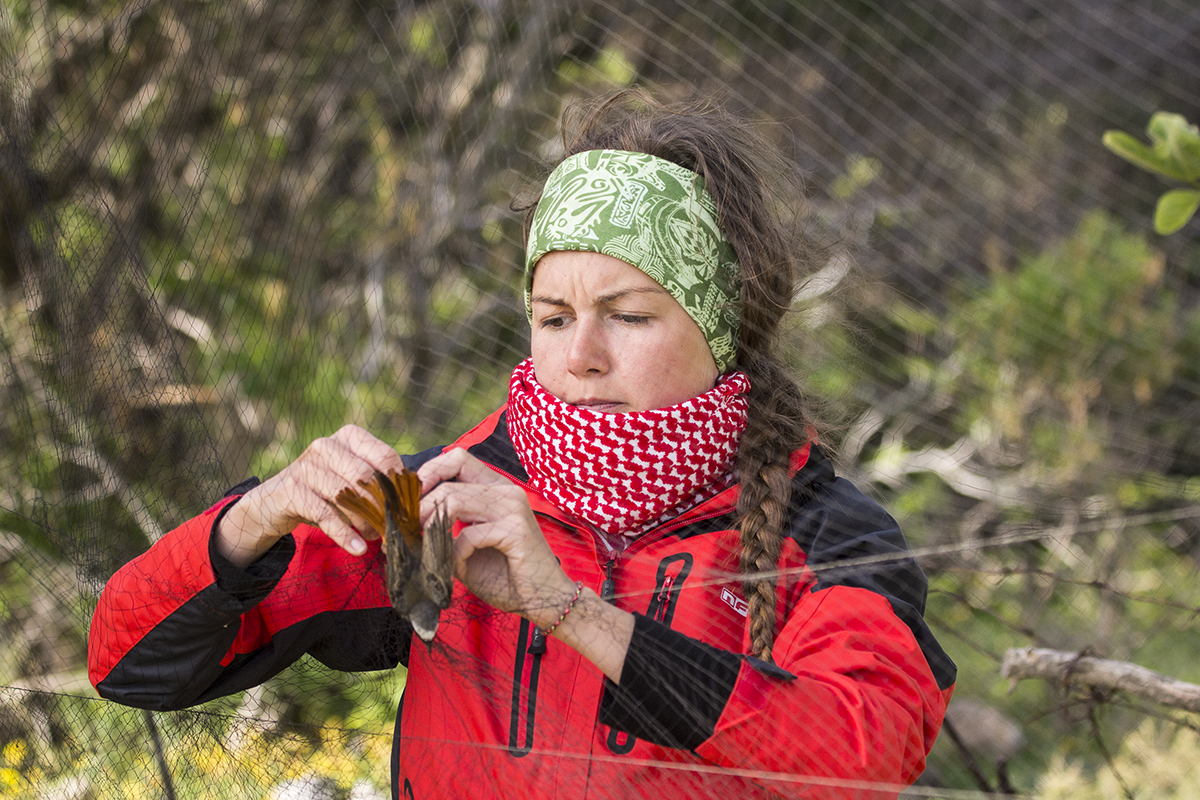
Raptor Migration Monitoring
Short Description
Systematic recording of all birds of prey passing through Antikythira and examination of all the parameters that affect through-passage. This action aims at:
- monitoring of the populations of birds of prey using this migration corridor and the evaluation of the importance of Antikythira to them.
- Recording of other potential uses of Antikythira by birds of prey besides passage (e.g. feeding and resting site).
Large birds using the same migration pattern with birds of prey (storks etc) are also recorded during the point counts.
Methodology
Point count method is used for recording. Observers are located at specific parts of the island. The observation posts, a total of five depending on the season, cover the island in a way that the observers can record species, sex, age, but also some more exquisite data such as ingression and egression altitudes. Weather conditions that also play an important role in migration (temperature, wind speed and direction, cloud cover, etc) are also recorded.
This action takes place for about five months per year, from the 15th of March to the 31st of May and from the 25th of August to the 31st of October.
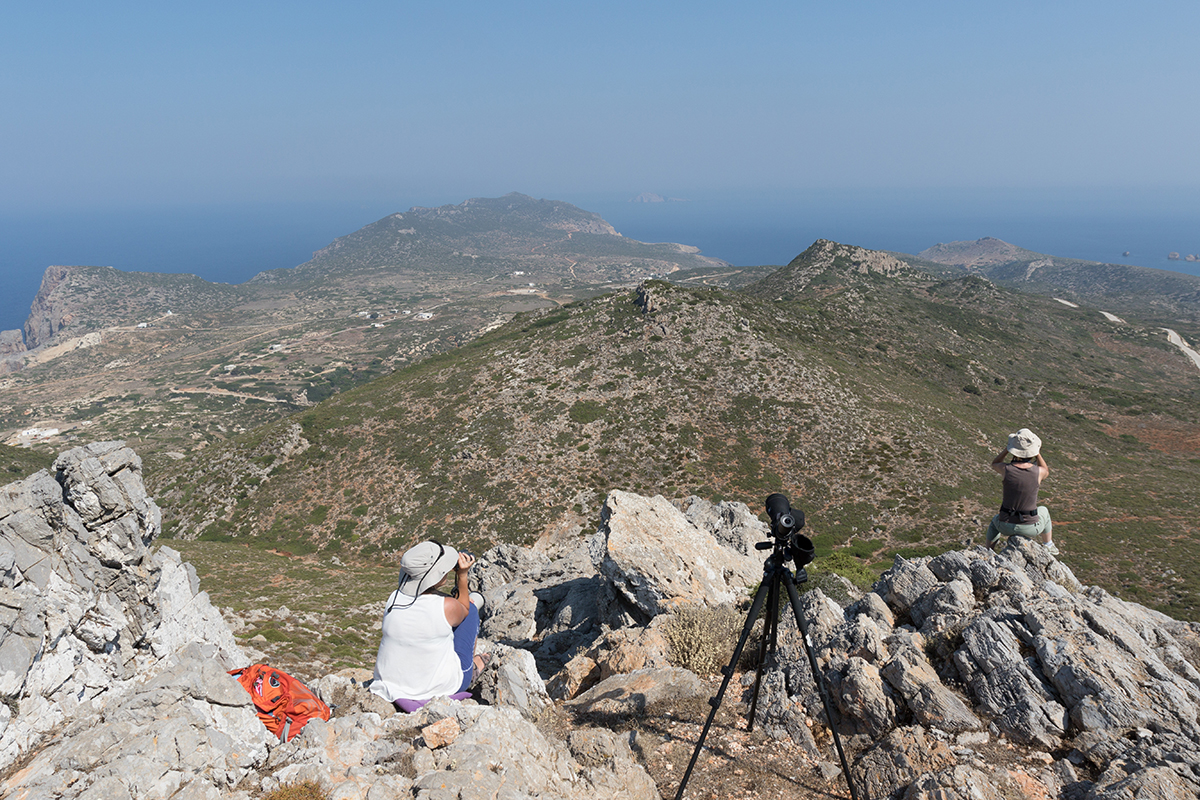
Eleonora's Falcon colony monitoring
Short Description
Eleonora's Falcon Falco eleonorae is a separate activity of ABO, as Antikythira host a significant portion of the global population of this species. Action is taken through a LIFE-Nature project implemented by HOS and its partners, aiming at:
- Recording and monitoring of the breeding population in Antikythira and adjacent islets.
- Guarding of the key colonies.
- Recording of the threats that this species faces in Antikythira
- Studying the special parameters related to the species' ecology, such as food availability
Methodology
Recording, monitoring and guarding of the Eleonora's Falcon are implemented on the basis of the methodology developed in the framework of "Conservation Measures for Falco eleonorae in Greece" LIFE-Nature project. The study of parameters related to the ecology of the species is directly linked with ringing and migrating raptors monitoring in the site.
This action takes place every year from the 15th of August to the 30th of September.
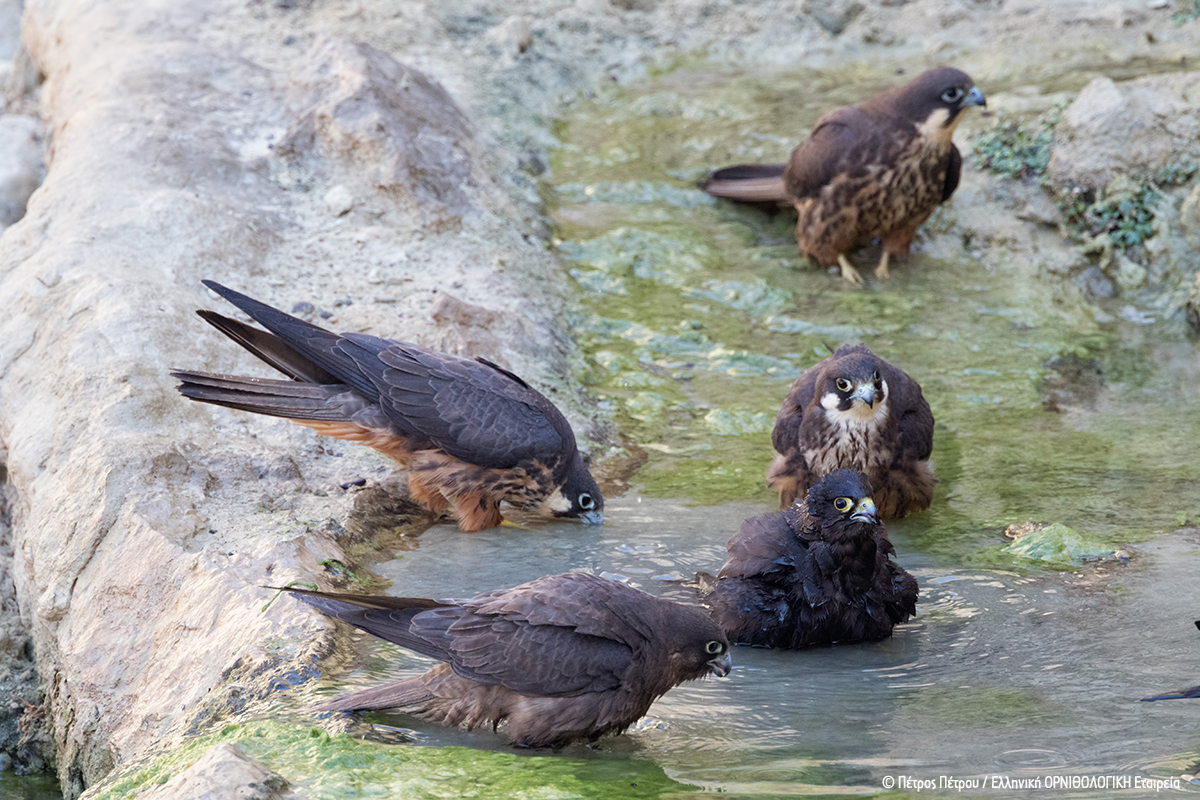

Every spring and autumn we study bird migration in this part of the Mediterranean. More than 200 species have been observed, and more than 100 species have been ringed.
Keen observers and ringers as well as assistants are welcome to participate in our volunteer projects!
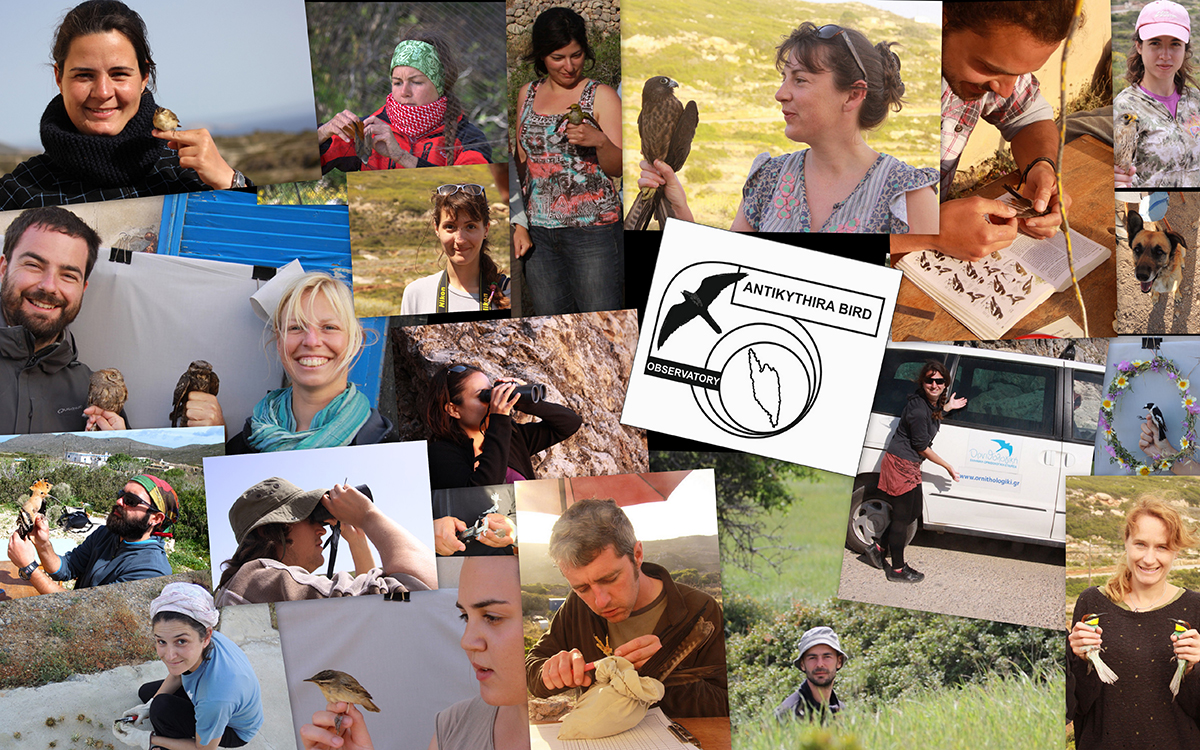
Raptor migration monitoring observer
Where
Antikythira Bird Observatory, Antikythira, GREECE
Why We Want You
We want observers to be part of the team of Raptors migration monitoring of ABO
What's In It For You
- Field work experience
- Variety of bird species
- Development of bird watching skills
- Bird Ringing experience/training
- Development of raptors identification skills
- Work with people who share the same passion with you in an international environment
The Skills You Need
- Ability to work as part of a team
- Bird watching skills desirable
- Bird ringing experience desirable but not necessary
- Raptors identification skills and ability to work long hours on the observation post (for raptors migration monitoring programme)
Your TimeWhen: Autumn (15/08-30/09)Commitment: Minimum 2 weeksAdditional information
Accommodation and food supplies provided.
Participation fee (euro, €):
Stay Non HOS members HOS members Students 2 weeks 120 85 70 3 weeks 160 120 95 4 weeks 200 155 120 5 weeks 240 190 145 6 weeks 280 225 170 7 weeks 320 260 195 8 weeks 360 295 220 Contact person: Christos Barboutis, This email address is being protected from spambots. You need JavaScript enabled to view it.
Ringer / helper
Where
Antikythira Bird Observatory, Antikythira, GREECE
Why We Want You
We want ringers as well as helpers to be part of the ringing project of ABO.
What's In It For You
- Field work experience
- Variety of bird species
- Development of bird watching skills
- Bird Ringing experience/training
- Development of raptors identification skills
- Work with people who share the same passion with you in an international environment
The Skills You Need
- Ability to work as part of a team
- Bird watching skills desirable
- Bird ringing experience desirable but not necessary
- Raptors identification skills and ability to work long hours on the observation post (for raptors migration monitoring programme)
Your time
When: Spring and Autumn (25/03-25/05 and 01/09-01/10)Commitment: Minimum 2 weeksAdditional information
Accommodation and food supplies provided.
Participation fee (euro €):
StayNon HOS membersHOS membersStudents2 weeks12085703 weeks160120954 weeks2001551205 weeks2401901456 weeks2802251707 weeks3202601958 weeks360295220Contact person: Christos Barboutis, This email address is being protected from spambots. You need JavaScript enabled to view it.
Useful information
Getting there
Antikythira is connected to the mainland only by sea. The island is connected with Piraeus (via Kythira), with Crete (Kissamos port in western Crete), with Peloponnisos (Gythio port, via Kythira) and Neapoli Voion (via Kythira). For ferry timetables visit the website of SEAJETS (https://www.seajets.gr/) and TRITON FERRIES (https://tritonferries.gr/en/home).
The island’s harbor is orientated towards the north, meaning that is not protected by the strong northern winds. This unfortunately means that when prevailing winds are strong (above 7 beaufort) the ferry cannot dock due to the small size of the port. So you can never be totally sure about your arrival and departure date. Therefore you may have to wait some days before coming and possibly you have to stay a bit longer.
For volunteers and visitors coming from abroad, the most convenient airports are Athens International Airport "Eleftherios Venizelos, ATH" and Chania International Airport "Ioannis Daskalogiannis, CHQ". In addition, there is the airport of Kythera, but in which there are only domestic flights from Athens.
It is strongly recommended for all volunteers and visitors to plan their travel (flights etc) allowing some spare days especially for the departure.
Accommodation
ABO volunteers stay in a Guesthouse that has been built for this purpose. It can host up to 11 people and each bedroom has 4 or 3 beds. There are 2 WC one for men and one for women as well as well-organized kitchen for cooking.
The cleanliness of the Guesthouse is the responsibility of volunteers and visitors who undertake, on a rotating basis, weekly assigned cleaning tasks based on the available human resources.
Food and Water
Basic supplies for breakfast and cooking are provided by the project. On the island there are two small taverns and a small shop. We normally visit the shop once a week (average price per person 10€). Note that the variety of available foods on the island is not great and that, sometimes, supplies of fresh fruit and vegetables may be irregular.
The Guesthouse is connected to the water supply network and the water is potable (in addition, a water filter is installed directly to the water supply). However, it should be noted that water is scarce on the island and everyone must make all efforts to consume as less as possible.
Guests are kindly requested to notify those in charge of the Project of any food intolerances / allergies in advance, so that appropriate care can be taken.
Communication
Most of the areas on Antikythira are covered by mobile networks, with a good mobile coverage in all areas where our volunteers reside and are most active. There is an internet connection (Wi-Fi) in the Ornithological Station but not in the Guesthouse. There is a postal agency on Antikythira and a free Wi-Fi network in the island's central settlement (Potamos).
Things you need
Note that there is no ATM nor drug store or Supermarket on Antikythira. Hence you have to make sure you have everything you may need during your stay in advance.
Essential things to bring
• Cash (euro)
• Sleeping bag
• Personal towels
• Shoes suitable for walking (trekking)
• Canteen
• Hat and sunscreen
• Head lens
• Personal medicationUseful (not essential) things to bring
Binoculars / Telescope
Camera
SwimsuitPanuccio M, Chiatante G, Tarini D (2013) Two different migration strategies in response to an ecological barrier: Western Marsh Harriers and juvenile European Honey Buzzards crossing the central-eastern Mediterranean in the autumn. Journal of Biological Research 19, 10 - 18

Lindeborg M, Barboutis C, Ehrenborg C, Fransson T, Jaenson TGT, Lindgren P-E, Lundkvist Å, Nyström F, Salaneck E, Waldenström J, Olsen B (2012) Migratory birds, ticks, and Crimean-Congo hemorrhagic fever virus. Emerging Infectious Diseases. 18(12), 2095-2097.

Agostini N., Lucia G., Mellone U., Panuccio M., Von Hardenberg J., Evangelidis A. & Kominos T. 2012. Loop migration of adult European Honey Buzzards (Pernis apivorus, Linnaeus, 1758) through the Central-Eastern Mediterranean. Italian Journal of Zoology. 2, 280-286.

Barboutis C, Mylonas M, Fransson T, Accepted. Seasonal differences in energy requirements of Garden Warblers Sylvia borin migrating across the Sahara desert. Ibis. 153(4), 746-754.

Dimaki M, Alivizatos H, 2011. Autumn migration of the Red-breasted Flycatcher Ficedula parva through Antikythira Island, southwestern Greece. Ringing & Migration. 26,71–73.

Barboutis C, Mylonas M, Fransson T, 2011. Breast muscle variation before and after crossing large ecological barriers in a small migratory passerine (Sylvia borin, Boddaert 1783). Journal of Biological Research 16, 159-165.

Lucia G, Agostini N, Pannucio M, Mellone U, Chiatante G, Tarini D, Evangelidis A. 2011. Raptor migration at Antikythira, in southern Greece. British Birds 104, 266-270.

Cecere JG, Matricardi C, Frank B, Imperio S, Spina F, Gargallo G, Barboutis C, Boitani L, 2010. Nectar exploitation by songbirds at Mediterranean stopover sites. Ardeola 57(1), 143-157.

Dimaki M, Papazoglou C, Akriotis T, 2006. Bird ringing in Antikythira island (S Greece).The Ring 28(1), 85-94.

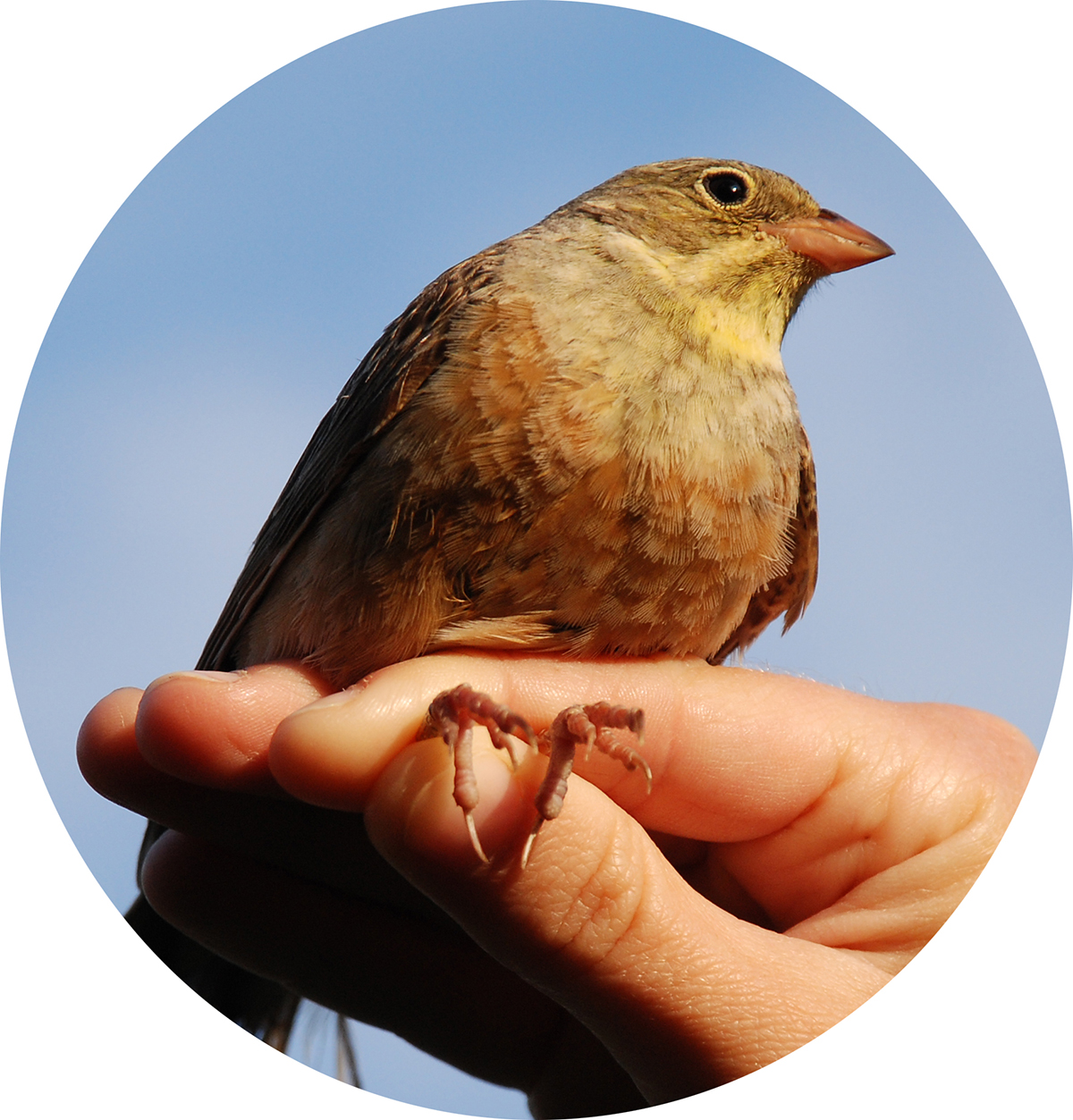
ABO leaflet (bilingual, map included)
Raptor monitoring leaflet (in Greek)

ABO info banners

